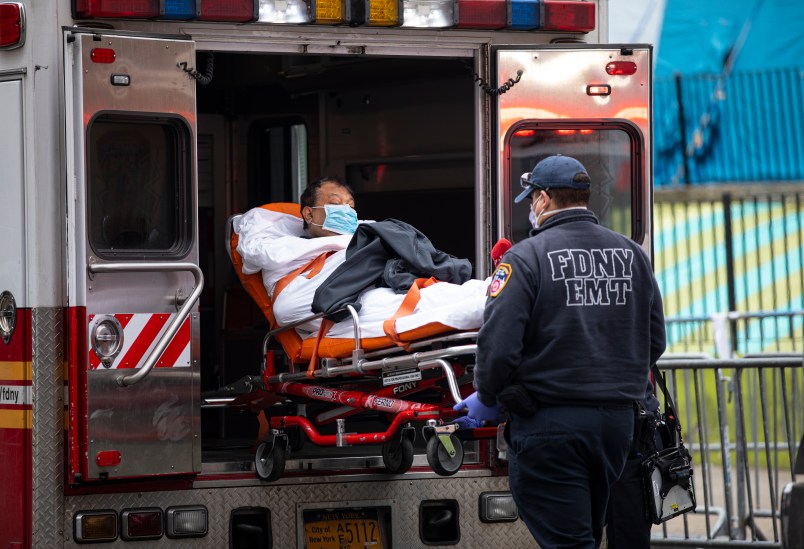New York City’s first responders are receiving some back-up from the federal government, the city announced Tuesday, as the number of emergency medical calls continues to break records with each passing day.
As of Tuesday morning, more than 50 of the back-up ambulances were already in the city’s 911 system and responding to calls, FDNY spokesperson Frank Dwyer told TPM. According to Mayor Bill de Blasio’s office, the partnership with FEMA will bring, in total, “250 more ambulances and approximately 500 more EMTs and paramedics to New York City.”
According to the city, 282 FDNY personnel had tested positive for COVID-19 as of Tuesday morning.
The back-up vehicles and their crews are employed by the FEMA contractor American Medical Response (AMR).
Still, with hundreds of first responders out sick and the 911 system taking more calls than it ever has, it wasn’t clear the additional help would meet demand.
“Last night again we broke another record,” Vincent Variale, president of the Uniformed EMS Officers Union Local 3621 told TPM. “The hits keep on coming.”
“We are at record call volume each day,” Dwyer said. He added that the FEMA ambulances and EMTs would initially respond to “lower acuity” calls, but that ultimately they would “go to calls of most need as this develops.”
“Our members can only handle a certain amount of jobs,” said Carl Gandolfo, a paramedic and union official at Local 2507, which represents FDNY EMTs, paramedics and fire inspectors. “The system can only handle what it can handle.”
As the virus continues to spread in the city, local and FEMA-contracted EMTs have also expressed concern about a lack of personal protective equipment.
The FDNY is rationing N95 masks due to short supply: Currently, EMTs and paramedics are only allowed to use the coveted masks for “aerosol generating procedures” such as CPR. For “fever/cough” calls and other patients with respiratory conditions, they’ve been instructed by the city to use surgical masks, which don’t protect as well against airborne viruses.
Dwyer said the FDNY had a “good supply” of masks, but union leaders like Variale say the N95s ought to be used on every call — as many patients unknowingly carry the virus.
“If we continue using them the rationing way, yes, we will have enough masks,” he told TPM. “But we’re not using them the way we should be using them.”
Variale said he has been home sick in recent days with a presumed case of COVID-19. His fever spiked to 102.5° last week, accompanied by a severe cough, aches and shortness of breath.
He told TPM Tuesday that he was feeling better, but that the cough and shortness of breath lingered. Variale hasn’t been tested for the disease — he said he called New York’s hotline for a test four days ago and hasn’t heard back.
FEMA contractors, though they come stocked with their own supply of personal protective equipment, have also expressed concerns about the virus’ ubiquity.
“[C]rews wear personal protective equipment, or PPE, but sometimes they respond to calls that are not related to COVID-19 and later find out the patient tested positive,” an AMR press release on the New York City deployment read.
Gandolfo expressed skepticism that the local and federal governments’ guidelines on mask usage would be enough to keep up with easily spreadable virus. He’s concerned that the long-term effects of the disease on the pulmonary system still aren’t known.
“The EPA told everybody the air was safe at Ground Zero on 9/11,” he said. “That is the battle cry of all the locals that are involved in EMS.”



